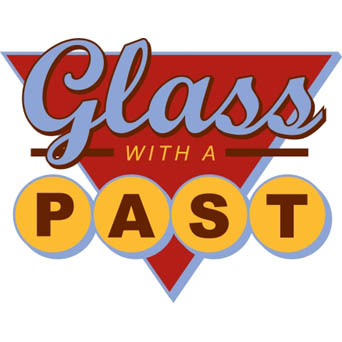Q & A Mondays are answers to reader questions submitted via email or social media. All personal information has been removed for privacy reasons and messages have been edited for clarity. You may submit your own questions through the About/Contact page.
Q: My school requires me to get the Material Safety Data Sheet for the bottles in order to fire bottles in their glass kiln because they’re concerned about the potential heavy metals in the bottles and fumes during firing. I’ve had no luck finding the MSDS anywhere (emailed at least 30 people and manufacturers).Are recycled soda lime bottle glass safe to fire in a glass kiln? Will there be any fumes emitted or potential heavy metals leaching (if there is any)?
-While firing recycled bottle glass in a glass kiln, what safety precautions do you take?
-Any other information, tips, thoughts would be really appreciated!
A: Hi there;
You could try looking at the Handbook of Glass Manufacturing, I refer to it a lot for things like technical and safety stuff. I’m a little surprised however by your school being concerned about bottle glass and not about fusible art glass. Bottle glass is much less complex and much more controlled in terms of manufacturing.
I’ve been using bottle glass for 20 years, I vent kilns to the outdoors during firing, although all of the detectable air quality issues are from kiln wash, shelf paper and glue rather than the glass. Dust during crushing is a very real hazard, you need to do that part of the process with full safety gear.
There are databases available online that show the manufacturing marks of bottles, including QC and the brand of the manufacturer, it is more likely that bottles from the same manufacturer will be compatible.
One great source of info is here:
https://emhartglass.com/download_center/1
Q: I just saw your blog,post of fusing crystal hearts. I’ve heard of safety issues with fusing lead crystal—that the kiln must be vented to the outside. Do you have any knowledge/information on this?
A: Hi there: the lead is molecularly bonded within the matrix of the glass, and unless you exceed 3000F, it can’t be separated back out. This info was gathered from the Handbook of Glass Manufacturing, and from an industrial safety hygienist that I consulted, in addition to information found on the Gaffer Glass site. Hope that helps.
Q: I watched a glass you gave 1+ years ago and you had a recommendation for a respirator to use when working around glass; do you have a brand/type? I currently use N95 masks but supply issues suggest I buy a respirator type.
A: Sorry for the very late reply, I am woefully behind on emails. I use this respirator:
https://www.amazon.com/dp/B007IA9SIA?psc=1&ref=ppx_yo2_dt_b_product_details
and these filters:
https://www.amazon.com/dp/B000UH6PSE?psc=1&ref=ppx_yo2_dt_b_product_details
ideally you buy a size that will fit your face snugly, I wear a small, and my assistant wears a medium, which is probably no help to you for determining your size 😀
They do a much better job than the N95 masks, and my glasses don’t fog, so there is that bonus benefit.
Hope that helps,

